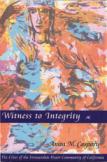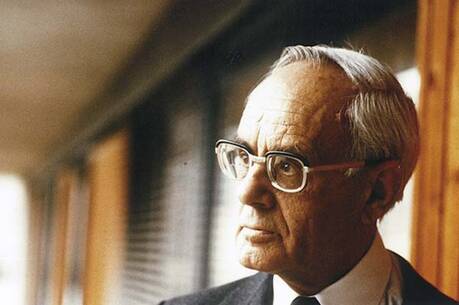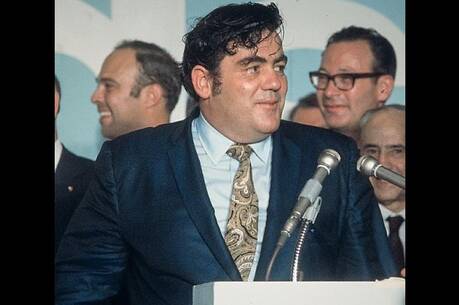A Hard-Fought Battle
“You will suffer for this.” With that ominous quotation, Anita Caspary begins a tragic and potent narrative of the 1967 crisis that led her religious congregation to dissolve its canonical ties with the Vatican and form an independent, ecumenical community. Older Catholics have vivid memories of this dramatic postconciliar controversy in the United States, during which 450 Sisters of the Immaculate Heart of Mary struggled to renew their lives and ministries according to the documents of the Second Vatican Council, and in the process found themselves pitted against the powerful cardinal-archbishop of Los Angeles, James Francis McIntyre. This book traces the events in chronological order, interspersed with personal reflection. It contains a rich collection of citations from previously unpublished letters and archival records, six appendices and a lengthy bibliography.
Caspary, who holds a doctorate in English from Stanford, brings the authority of personal testimony and lived history to her account. As president of the I.H.M. College in Los Angeles from 1957 to 1963, and as the order’s mother general from 1963 to 1969, she found herself the lightning rod in a deepening conflict that stemmed from the progressive innovations and creativity for which the sisters were known in the 1960’s. The order was founded in 19th-century Spain, and the California branch of the community severed its ties with Europe in 1924 to be recognized as a “pontifical institute.” Ironically, this status was sought to ensure a certain freedom from encroachment upon the congregation’s rights by local clergy and hierarchy. By 1967, the I.H.M.’s had grown in numbers and influence, staffing over 60 elementary and high schools, two hospitals and the renowned Immaculate Heart College for women. It was there that the brilliant Sister Mary Corita Kent was revolutionizing modern religious art and attracting national publicity with her offbeat and quirky serigraphs.
Leaders in education and the arts, the community launched its internal renewal in the spirit of Vatican II with zeal and enthusiasm, bolstered by contacts with some of the best conciliar theologians, psychologists and spiritual leaders. Spurred on by the encouragement of church documents and the call for aggiornamento, Mother Mary Humiliata (Caspary’s religious name) and her councillors encouraged the sisters to experiment with new prayer forms, dress and apostolic presence. Never did they expect to meet with the level of “impassioned resistance” shown by Cardinal McIntyre. He had already made an unexpected and unpleasant visit to the leadership in 1965, demanding that they cease their renewal efforts and return, not to their sources, but to his view of religious life. “The cardinal, not modern thinkers,” he said, represented the church in Los Angeles.
McIntyre had resisted some of the decisions of Vatican II, particularly in the areas of lay participation at Mass. He was also ill prepared to enter a new springtime for the church and its women and men religious. As Caspary weaves the tragic story, McIntyre’s repeated attempts to counter the sisters’ sincere and appropriate renewal efforts became a long litany of deceitful maneuvers and patriarchal directives. Worst of all, he exceeded the limits of his authority by interfering with the internal life and authority of their religious institute, and then persuaded Vatican officials to support his views and to force the issue of non-canonical status. In the end, might won over right for the I.H.M.’s, and the suffering with which McIntyre had threatened them erupted as reality on a national scale. Moreover, the I.H.M. “case” would serve as an object lesson for hundreds of other congregations.
Early in 1968, after imposed “visitations” by various church officials and several unsatisfactory meetings with representatives of the Vatican, Caspary received from Cardinal Antoniutti at the Sacred Congregation of Religious a letter that became known as the Four Points Document. This directive called for a reversal of some “drastic changes” reportedly introduced. It mandated a uniform religious “habit,” community attendance at daily Eucharist, a commitment to education in the schools and collaboration (read: obedience) with regard to the local ordinary. The initial outcry from the I.H.M. chapter delegates spread beyond Los Angeles; soon widespread discussion, dismay, outrage and support found their way into the media. For most of the I.H.M. sisters, the Vatican request for a reversal of direction for their renewal was an affront to their consciences and to the authority of their general chapter, “a blow to the hope of renewal as many communities envision it.”
Renewal, as this community envisioned it, excluded unjust interference from church authorities or threats to remove noncompliant members from archdiocesan institutions. Disturbed by the possible undermining of efforts at renewal throughout the United States, the leadership conferences of both women and men religious sent formal statements to the Vatican declaring their support for the I.H.M.’s, but it may have been too little too late. Anita Caspary had already begun to envision a “creative alternative” in a form of religious life outside the canonical structure. By mid-December of 1969, each I.H.M. sister was asked to state her choice: to be dispensed from her public vows and become part of the new lay group, to join another congregation or to remain I.H.M. according to the guidelines of the Four Points Document. The vast majority chose to be “disempowered” and to form the new Immaculate Heart Community.
While the story is not yet over, it invites further pondering and reflection. Some readers will approach this as a documentary history of a sad, and sadly familiar, nuns’ story. Others will see it as a cautionary tale for those who would speak truth to power, or as a starting point for discussion on church life today.
Thirty years after the fact, many in our institutional church are still mired in issues of authority and control. Caspary’s story is not only a witness to integrity. It is a beacon of hope and courage in a time of crisis.
This article also appeared in print, under the headline “A Hard-Fought Battle,” in the November 24, 2003, issue.








